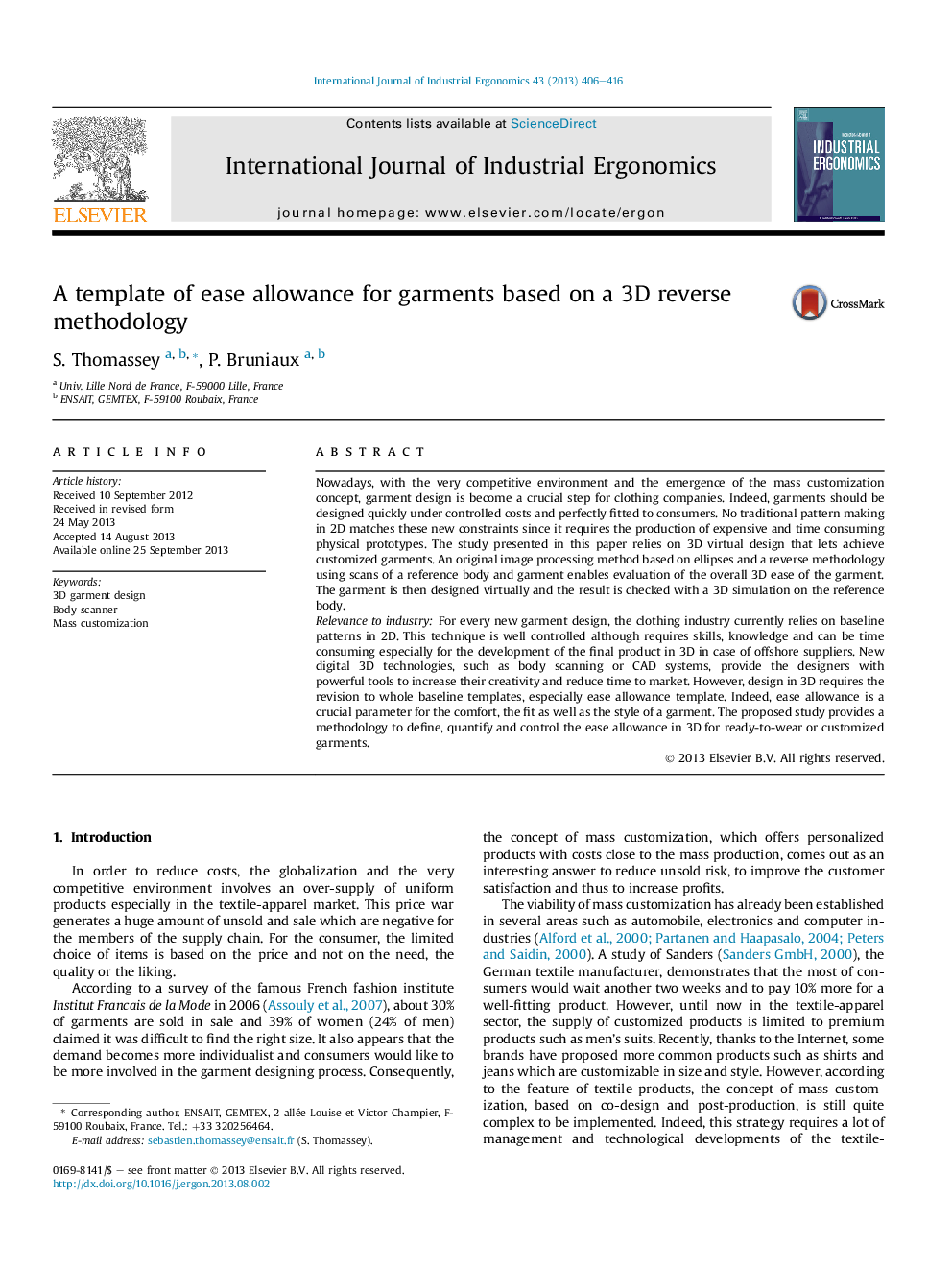| کد مقاله | کد نشریه | سال انتشار | مقاله انگلیسی | نسخه تمام متن |
|---|---|---|---|---|
| 1096044 | 1487438 | 2013 | 11 صفحه PDF | دانلود رایگان |

• New digital 3D technologies provide the apparel designers with power-full tools.
• The ease allowance is difficult to quantify when garments are designed in 3D.
• This study provides an efficient and reliable method to quantify the ease allowance.
• The methodology is implemented for a shirt on a reference morphotype.
• The results can be adapted to any morphology close to the reference morphotype.
Nowadays, with the very competitive environment and the emergence of the mass customization concept, garment design is become a crucial step for clothing companies. Indeed, garments should be designed quickly under controlled costs and perfectly fitted to consumers. No traditional pattern making in 2D matches these new constraints since it requires the production of expensive and time consuming physical prototypes. The study presented in this paper relies on 3D virtual design that lets achieve customized garments. An original image processing method based on ellipses and a reverse methodology using scans of a reference body and garment enables evaluation of the overall 3D ease of the garment. The garment is then designed virtually and the result is checked with a 3D simulation on the reference body.Relevance to industryFor every new garment design, the clothing industry currently relies on baseline patterns in 2D. This technique is well controlled although requires skills, knowledge and can be time consuming especially for the development of the final product in 3D in case of offshore suppliers. New digital 3D technologies, such as body scanning or CAD systems, provide the designers with powerful tools to increase their creativity and reduce time to market. However, design in 3D requires the revision to whole baseline templates, especially ease allowance template. Indeed, ease allowance is a crucial parameter for the comfort, the fit as well as the style of a garment. The proposed study provides a methodology to define, quantify and control the ease allowance in 3D for ready-to-wear or customized garments.
Journal: International Journal of Industrial Ergonomics - Volume 43, Issue 5, September 2013, Pages 406–416